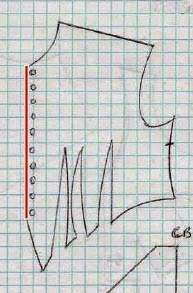"There are so few pieces left, how can we really know?"

There's an attitude that I've come across more than a couple of times in discussions centered on whether or not a certain costume in a certain film is accurate, or when someone asks about improving their own kit. It's not quite inevitable, but a good amount of the time someone else will come in and say, "Nobody really knows what they were wearing, because none of us were there." Or, "We have hardly any extant clothing, compared to the amount that existed at the time, so you don't actually know what's right and wrong." This is wrong on a few levels. 1) There are a lot more extant garments than you think. At the Metropolitan Museum of Art, when I search for 1600-1800 in the Costume Institute, there are 1,346 records. And that's just what's been photographed. The Victoria & Albert Museum, the Kyoto Costume Institute, the Los Angeles County Museum of Art, the Museu do Traje in Lisbon, the Museo del Traje in Madrid - these are all imme
